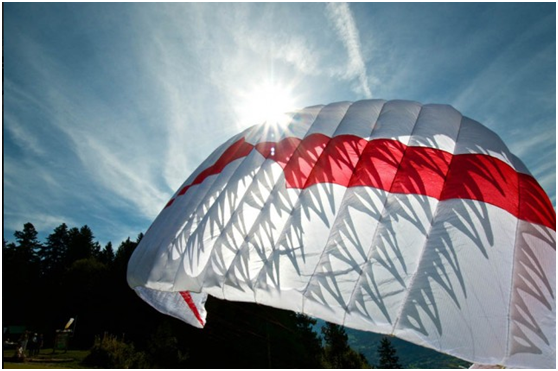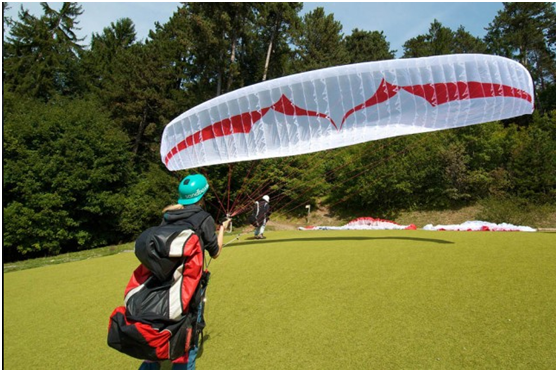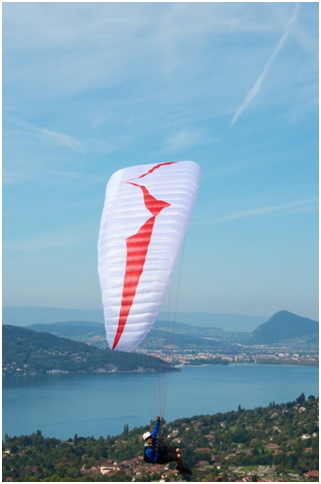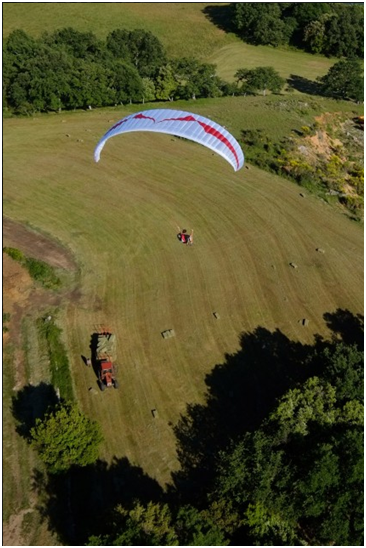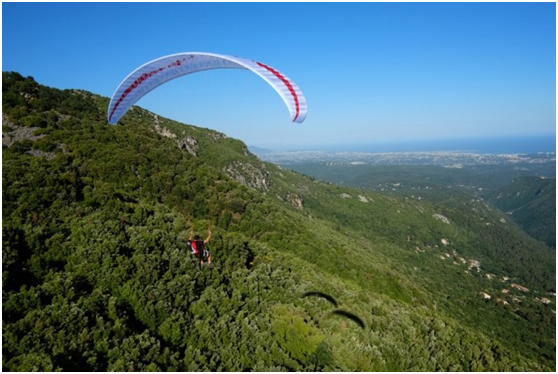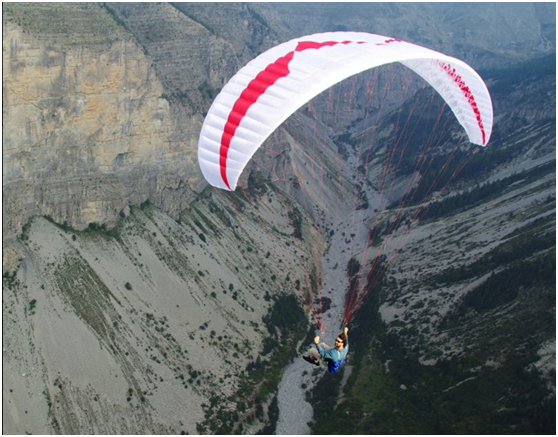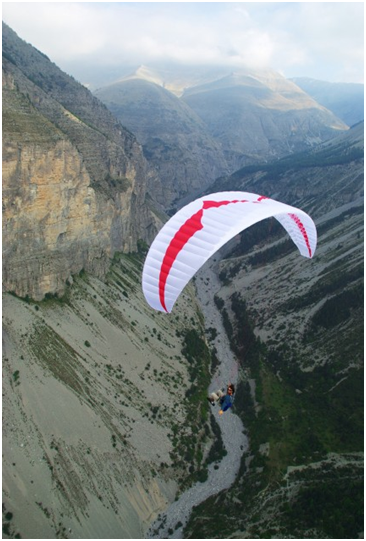ozone XXLITE
- ¥22800
原价:¥0
THE XXLITE
The XXLite is one of the most unique paragliders to ever be put intoproduction. This modern single-surface design is the absolute ultimate inultra-lightweight flight and is probably the lightest aircraft in existence.The Ozone R&D Team contains several members who are avid alpinists and hike& fly pilots, and this wing is the result of our passion for innovation andadventure. It is a special wing for special pilots who fully understand itslimitations, and have the skill and experience to pilot it.
With the entire canopy open to the relative airflow and approximately 5kgof air missing from “inside” the wing, the XXLite is more than 80% lighterwhile flying than a normal paraglider of the same size. This means that thepilot will experience more of the air than ever thought possible, as it has somuch less inertia as it moves through variations in the air mass. Thisheightened “sensitivity” should not be understated, and it is important thatpilots who choose to fly the XXLite are capable of appreciating the feedbackthat this wing will provide, and also of evaluating the conditions that areappropriate for flying it.
For the reasons above, it would be an oversimplification to call theXXLite a “descent” wing. The feeling of the XXLite in flight is totallyunfiltered and may be disconcerting to pilots without the necessary experience.When flying the XXLite, it is important to realize that its movements andfeedback are a natural result of physics. Without the weight of a volume of airinside the wing, the airfoil is highly affected by every movement it encountersin the atmosphere but this does not make the wing inherently unstable. Due tothe wing’s lack of inertia, it also has far less of a tendency to overshoot,and this reduced amplitude is a positive characteristic in turbulence.
The pure glide performance of the XXLite is comparable to an Ultralite ofthe same size, but the trim speed is significantly slower and it does not havean accelerator system. Therefore, pilots must anticipate this lack of availablespeed when choosing conditions to fly in. The slower trim speed means that youwill spend more time in a headwind or turbulent area, and your glide will beproportionately affected.
Despite its limitations, the XXLite can be a versatile wing and is capableof great things. During its air-trial period, Ozone Team Pilot Martin Bonisflew the XXLite to the summit of Mt Blanc, where he top-landed on one of thestrongest thermal days of 2012. Likewise, pilots who enjoy the enhancedsensations of “unprotected sex flight” will get the most out of this excitingnew design.
The XXLite is recommended for experienced pilots who are looking to add aspecial second (or third) wing to their quiver. As always, we recommendcontacting your local Ozone dealer to arrange a test flight. If you think thatthe XXLite is right for you, then we hope that you enjoy flying this specialproject as much as we have, and we hope to share a summit with you one day.
Cheers from all the Team.
16 | 19 | |
Number of panels | 41 | 41 |
Projected area (m2) | 13.9 | 16.4 |
Flat area (m2) | 16 | 18.9 |
Projected span (m) | 7.4 | 8.1 |
Flat span (m) | 9.3 | 10.1 |
Projected Aspect Ratio | 4.0 | 4.0 |
Flat aspect ratio | 5.4 | 5.4 |
Root Chord (m) | 2.2 | 2.4 |
Glider Weight* (kg) | 1.20 | 1.37 |
In-flight weight range (kg) | 65-95 | 85-115 |
EN / LTF | EN Load Test | EN Load Test |
* Weights may vary up to50gm per size due to slight variations in the manufacturing of the fabric used.
· Top Surface Cloth: Porcher 7000E71A
· Rib cloth: Porcher 7000 E29
· Upper lines: Edelrid 8000U-050
· Mid lines: Edelrid8000U-190/130
· Lower Lines: Edelrid8000U-230/190
Do not use normal doublesurface wings as your reference, the XXLite is a unique wing and requiresspecific loading for optimum performance.
The wing creates lift ata relatively slow speed, so launching is straight forward, even when heavilyloaded on the smallest size. The launch speed is similar to a double surfacedwing 3-4m bigger.
Speed is related to wingloading, it is important to not be below the recommended minimum weight range.
Pilots with an all upweight (remember the low weight of the wing) of 65-95 kgs should consider the16, those between 85 and 115kgs the 19.
· The XXLite was tested intensivelythroughout its long development and has proved to be a stable and forgivingwing that can be safely flown in sensible conditions. Due to the wing’s extremelylow weight and lack of internal pressure, the feeling of the XXLite in the airis quite unique, and the wing is unsuitable for inexperienced or nervouspilots. It is EN load tested to 8G at a maximum weight of 115kgs, but has noflight certification. What follows is a description of the XXLite’s behaviour.
· TEST PILOT NOTES:
· Inflation in zero to lights winds isextremely quick and easy, the wing stays easily overhead in just a light windand is very straightforward to control.
· Launch behaviour in stronger winds is moredemanding as the wing has a tendency to want to fly, it is best to control thewall with the rear risers.
· The take off lifting speed is relativelyslow. Launching is straightforward and easy and as you leave the ground soonerthan on a similar sized double surface wing.
· In the air, the brake pressure is lightand progressive and the wing is very sensitive to inputs.
· Handling is direct and immediate so thethermalling behaviour and general manoeuvrability is very good.
· Feedback is unfiltered, it is verysensitive to the movements of the air, the wing transmits this with smallmovements in pitch and yaw. In stronger turbulence these movements can be quitefast, but are without much amplitude.
· It is best to fly with a small amount ofbrake applied at all times.
· Landing is straightforward but without theflare of a normal double surfaced wing.
· EN FRONTAL COLLAPSE:
· The XXLite is very collapse resistant.Collapses normally occur progressively, starting with a deformation in thefront part of the chord, which works its way rearwards.
· Since the rear part of the chord generatesa lot of lift, the reopening is spontaneous and immediate. There is no delay ortendency to stick.
· Post collapse, no input is necessary forre-inflation - it will happen spontaneously. However, as with any frontcollapse on any wing, we recommend a symmetric input to aid reopening and tokeep in contact with the trailing edge.
· EN ASYMMETRIC COLLAPSE, 70-75%:
· The wing behaves in a similar way to thefront collapse; it tends to deform more than collapse and the re-inflation isimmediate.
· Due to the small size and high wingloading, after an induced collapse the wing starts to rotate and dive with afast movement, however due to the fast reopening behaviour, the pitch is generallyno further than 45-60 degrees and the rotation no more than 90 to 135 degrees(without pilot input).
· SPIRAL DIVE:
· The wing resists acceleration into deepspiral, with the “naked” ribs acting like an anti-spiral system and forcing thewing to stop as soon as the inside brake is released. The deceleration isimmediate and the recovery to a straight flight very quick, faster than normaldouble surface wings.
· SPIN / STALL TENDENCY:
· The brake range is long, and the brakepressure increases in a progressive manner and shows the same behavioursymmetrically (Flare/Full Stall entrance) and asymmetrically (Spin point). Thepressure near the stall point is relatively high, and needs to be forcedthrough this point to actually stall the wing.
The wing has no delay of recovery from an incipient stall, it will flyimmediately with a positive movement forward. This movement is fast but with alow pitch angle.
· FULL STALL:
· The Full Stall is a more demandingmanoeuvre both technically and physically.
Due to the long brake range, the point of full stall requires a very deep brakeinput, taking wraps may be necessary.
· The point of stall is quite sudden, thewing tends to drop back fast.
· During the full stall, the brakes need tobe kept low to counter the tendency of the wing to want to re-fly. This is moredemanding than with most other wings.
· The exit also requires attention; due tothe small size of the wing, the sink rate during the full stall is high andtherefore the brakes need to be released in a very slow and progressive motion.
· The wing will recover flying with yourhands still in a low position.
· Upon exit of the Full Stall the pitchangle can be quite high, up to 90 degrees, so this needs to be countered.
· Despite its good behaviour, we still feelthat the XXLite is only suitable for experienced pilots and that it should onlybe flown in reasonably light wind and turbulence-free conditions.
· CONCLUSION:
· Despite its good behaviour, we still feelthat the XXLite is only suitable for experienced pilots and that it should onlybe flown in reasonably light wind and turbulence-free conditions.
· SPECIAL NOTE:
· Compared with a normal paraglider, wherethe ribs are protected within cell walls, the exposed nature of the XXLite’smake it more susceptible to damage. Because of this extra care should be takenwhen handling the wing on take off, in the air and after landing. We do notrecommend you to perform SIV or aerobatic manoeuvres. Doing so will reduce thelifespan of the wing and done incorrectly could result in damage to the wing.
· CHOOSING YOUR SIZE:
· Do not use normal double surface wings asyour reference, the XXLite is a unique wing and requires specific loading foroptimum performance.
· The wing creates lift at a relatively slowspeed, so launching is straight forward, even when heavily loaded on thesmallest size. The launch speed is similar to a double surfaced wing 3-4mbigger.
· Speed is related to wing loading, it isimportant to not be below the recommended minimum weight range.
· Pilots with an all up weight (remember thelow weight of the wing) of 65-95 kgs should consider the 16, those between 85and 115kgs the 19.
